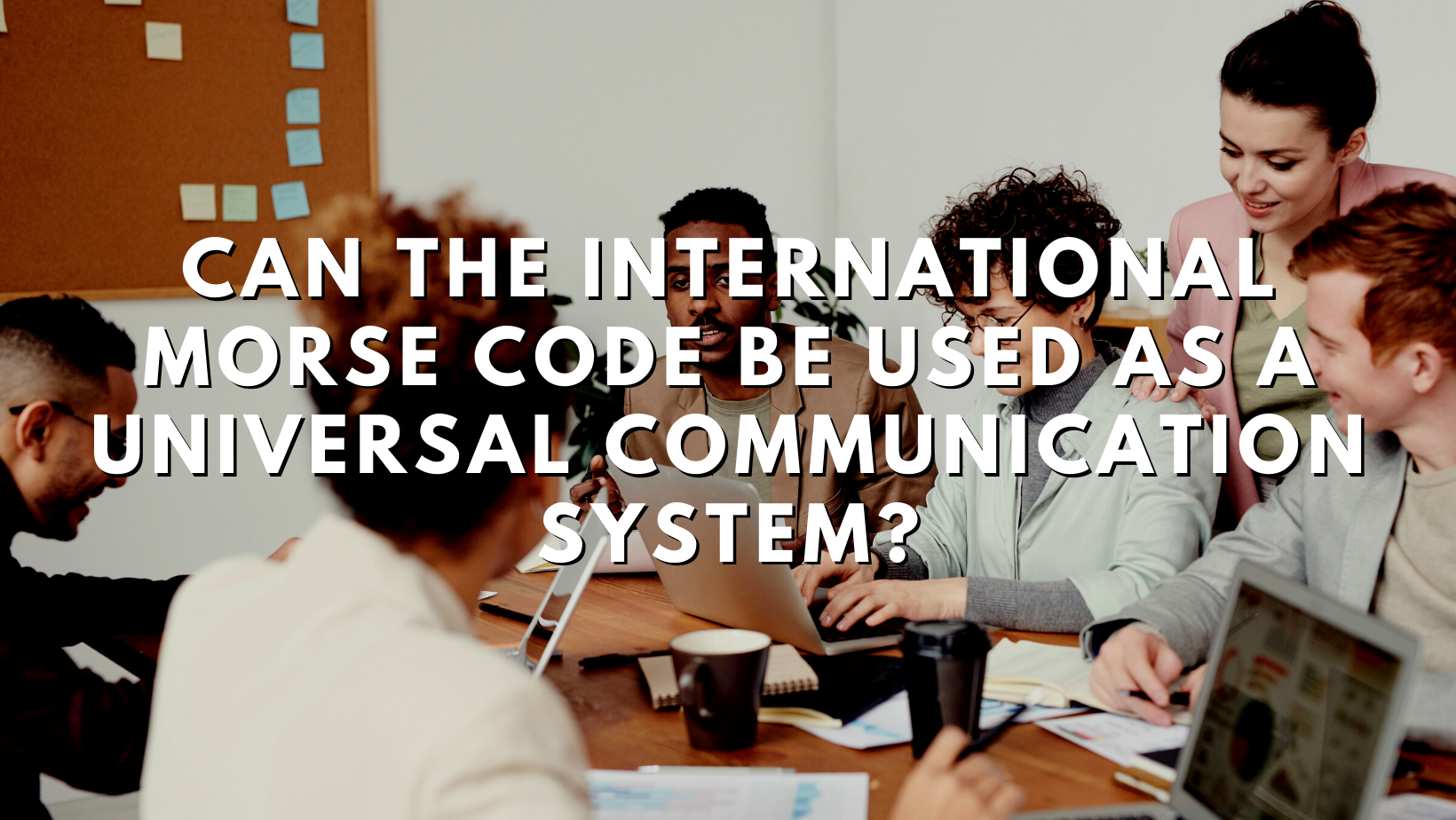Hello, Friends! Welcome to our article! We are excited to share our insights, knowledge, and experiences with you on a variety of topics. Today our topic is Can The International Code Be Used As A Universal Communication System? In this article, we will also see the different Morse code Translator and their features and the ways to use them.
Morse code is a telecommunications method for encoding text characters as standardized sequences of two different signal durations known as dots and dashes, or dits and dahs. Morse code is named after Samuel Morse, one of the telegraph's inventors.
Morse code was developed in the mid-19th century as a way to communicate by telegraph, and it was widely used in the early days of telecommunications. However, with the advent of more advanced communication technology, such as the telephone and the internet, its use has become largely obsolete.

International Morse code, also known as continental Morse code, is a standardized version of Morse code that is used internationally. While it is widely recognized and used in many countries, it is not considered to be a universal communication system.
Morse code is a system that is based on sound, light, or touch, which is not always possible in certain environments. For example, in an underwater or space environment, it would be difficult to transmit sound or light signals.
There are several reasons why International Morse code is not a universal communication system:
However, it is still widely used and taught as a form of emergency communication, where its simplicity and resilience to interference makes it a good choice, and it is also used as a mode of communication in amateur radio service.
Morse code is a system of representing letters and numbers using a series of dots and dashes. It was originally developed as a way to communicate over telegraph lines, but it has also been used in other forms of communication, such as radio. In Morse code, each letter of the alphabet and each number is represented by a unique combination of dots and dashes.
A Morse code translator is a device or piece of software that can translate text into Morse code and vice versa. It can be used to convert a message written in English (or any other language) into a series of dots and dashes that can be transmitted using a signaling method, such as a flashing light or sounding a tone. The recipient of the message can then use a Morse code translator to convert the dots and dashes back into the original message.
Morse code translators can be useful in a variety of situations, such as for sending messages in emergencies when other forms of communication are not available, or for learning and practicing Morse code.
Online tools: Numerous websites offer free Morse code translation services. These tools allow users to type in a message and translate it into Morse code, or to enter a series of dots and dashes and translate it back into text.
Smartphone apps: There are also several smartphone apps that can be used as Morse code translators. These apps may offer additional features, such as the ability to listen to the translated message as a series of beeps or to save translations for later reference.
Hardware translators: There are also physical devices that can be used as Morse code translators. These may be handheld devices that allow users to enter text or Morse code using buttons or a keypad, or they may be built into other equipment, such as radios or emergency signaling devices.
Software programs: Some software programs also include Morse code translation capabilities. For example, some amateur radio software packages include a feature that allows users to translate text into Morse code and transmit it over the air.
Custom-built translators: Some people may choose to build their own Morse code translators using microcontrollers or other electronic components. These custom-built translators can be tailored to the specific needs and preferences of the user.
International use of Morse code was widespread in the past, particularly in maritime and aviation communication. In maritime communication, the International Morse Code was standardized with ITU (International Telecommunication Union) and adopted by many countries for coastal and ship-to-ship communication. But with the passing of time and the development of more advanced communication systems, Morse code is no longer used as an international standard.
It represented the first time in human history that complex thoughts could be communicated almost instantly over long distances. Until then, people had to communicate face to face, send coded messages via drums, smoke signals, and semaphore systems, or read printed words.
Dot dot. 4 dots for H, 2 dots for I. Dot dot dot dot.
Today, Morse code remains popular with amateur radio operators around the world. It is also commonly used for emergency signals. It can be sent in a variety of ways with improvised devices that can be switched easily on and off, such as flashlights.
In conclusion, while Morse code was once a widely used method of communication, it is not suitable as a universal communication system. Its limited range of characters, dependence on sound, light, or touch, and the advent of more advanced technologies make it less practical for modern communication needs.
Thank you!